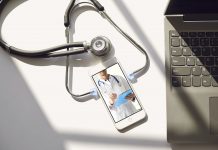Digital transformation in the NHS can mean different things to different people, here Ben Riley explores the digital future of the NHS and what online data can do for healthcare
In this piece, I’m looking into digital transformation in the NHS, where it is currently, where it was (and could have been now) and where it looks to be going in the future.
I’ll also dive into some personal opinions or suggestions on how I think we might solve some of the problems in later parts of this series. This will mostly be from a high level, but we’ll also go into some detail when relevant.
The relative nature of digital transformation in the NHS
First, digital transformation in the NHS can mean different things to different people and on several different levels. From a high level you could say it’s about how the public will be able to use digital media to interact with the NHS and their own personal data.
For others, especially those working in or with clinicians, it might be about transferring a paper-based system in a hospital or clinic onto a database. Searching the web you’ll find many different descriptions such as this article from the government or digging through NHS England into their long-term plan here and here.
From my own personal perspective, I’ve got two different viewpoints as I used to be an NHS employee. As I mentioned above, as a member of the public, I personally think it’s about communication between us and NHS, how this is evolving and how I interact with my personal data.
From my other perspective, as someone who worked in the NHS for almost two decades in several different IT, data engineering and analytical roles, I see it as something to improve how the existing computer systems communicate. I’m also married to a nurse, and she’s got her own viewpoints on all this as a clinician.
Full disclosure though, I’m no longer an NHS employee as I left to start my own company a few years ago. However, I still deal with several NHS organisations regularly in a professional capacity to support them with their data, information, and analytics platforms. This career path through the NHS has given me a good view of how the NHS deals with data and digital transformation.

NHS digital transformation from a public perspective
As a member of the public, how do we see digital transformation in the NHS? How does it benefit us? If you’re like me, then you’ve probably seen several apps that let you do things such as book appointments with your local GP and view your personal health information. I’d imagine that unless you’re an NHS employee, though, this is probably the only direct exposure to digital transformation in the NHS that you’re aware of.
You could argue that this is probably all we need or want from the NHS in terms of digital transformation (from a publicly visible standpoint that it). For me, I’d agree with you, I mean if you’ve got an app or website you can open to view your appointments or medical history or book stuff, what more do you want?
In terms of these apps and websites, I think at this it’s also probably pertinent to mention that there are of course, many less tech-savvy people who don’t use (or in some cases, aren’t even aware of) any of these facilities. Do older members of your family know about or use these apps? Most of mine don’t; they just use the phone.
This all seems well and good, it really is how the NHS should have been several years ago, at least in a public-facing capacity. There is good progress being made in many areas. So, what’s the issue? Everything seems ok, doesn’t it? Well, not exactly.
The devil is in the details when it comes to the NHS and data
There is a subtle issue hiding here, something that’s not entirely obvious to anyone outside the NHS and who knows about its complicated relationship with data.
This is something that isn’t necessarily an issue for the public user who is opening their NHS app and booking appointments or ordering prescriptions. This is more an issue of how this data is getting to these apps. This brings us to another part of the plan for digital transformation. Trying to get all the different computer systems to talk to each other.
But surely the NHS just has its own computer system everyone feeds into by now, I hear you say? I remember reading years ago that you’d be able to book an appointment with your GP, and the hospital could access the data.
Well, not exactly. We need to talk about the way the NHS is structured, as it is a little bit like lots of small businesses acting as a single entity. We have GP surgeries, hospitals, clinics and so on.
Quick side note, we’ll leave aside from a moment the high-level strategic structure of the NHS, such as how it’s split into commissioning and service provider organisations, although we may return to that at a later time.
Where’s my data?
For now, we’ll just focus on looking at each the GP surgeries, hospitals, and clinics etc. They each store data separately on their own computer systems. This is why the NHS and government are looking trying to improve how these computer systems talk to each other, this is also why your GP (at least at the moment) may have its own app, and the NHS has a separate one.
The NHS doesn’t have your data (yes, we’ll talk about the Spine later); it’s the individual GP surgeries, hospitals, and clinics you’ve visited that do. Note that only the surgeries, hospitals, and clinics you’ve visited have your data.
Other hospitals, clinics, or surgeries don’t. It’s all separate, too, on different computer systems held by each of these organisations. To coin a term used in business intelligence, they’re like data silos that are hard to join together.
In the next part, we’ll look at how digital transformation in the NHS has been attempted in the past and if there are any lessons we can learn from what happened.
Contributor Details
More About Stakeholder
-
Aventius Limited: Developing, training and consulting for a digital future
Aventius Limited provides support, development, training and consultation services around the Microsoft Azure data platform.
Editor's Recommended Articles
-
Must Read >> How can digital hospitals help provide better care?
















